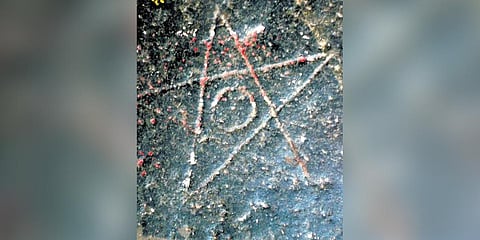

CHENNAI: The season of Christmas brings a unique symbol to the forefront — the star — the five-pointed star. The five-pointed star is a familiar one to all of us. Its one of those designs you can draw without lifting your finger from start to finish. Many of our schoolbooks were scribbled with stars and every little childish artistic effort featured this star at some point in time.
This shape, often called the Star of Bethlehem, is used to denote the star that is believed to have appeared in the sky on the night Jesus was born. This is distinct from the six-pointed star or the Star of David which is well known symbol in Judaism. Closer home the six-pointed star typically drawn by two interlocking triangles has deep significance. The upper triangle is believed to denote Shiva and the lower one Shakthi and the complete star as a symbol of the divine union of masculine and feminine and as a source of all creation.
The five-pointed star or the pentagram on the other hand is believed to represent the five elements – earth, wind, fire, water and ether and is typically drawn with one tip pointing upwards.
But no matter the significance or the number of points, stars have come to represent something magical and divine — a symbol of excellence.
Taken from the perspective of Indian traditional games, there is more to the stars. While there are certain hints available about dice games being played on six-pointed stars and some clues that we have uncovered about these, there is as yet no clear or concrete information on this. We can hypothesise but much research is yet to be done on this. Readers who are aware of such a game or whose family members are aware could please reach out to the author.
The five-pointed star is a different story. We have discovered rules of two kinds of games being played on this board. Interestingly, both versions are single-player games. Single-player games are fascinating because the player is pitted against the self. Unlike solitaire played with cards, which is often a matter of luck, these games are a matter of thinking and strategy; and the person you are trying to outwit is yourself so you can do better than you did the last time.
One game involves placing game pieces on all the points and intersections of the star and removing them one by one when one game piece jumps over the other. The second version is a placing game that involves placing the game pieces on the points and intersections following certain rules.
The second version is baffling and hard to solve as what it needs is for you to discover the lesson inherent in the star — in Hindu philosophy — in every end, there is a beginning and in every beginning is an end.
To say more would be to give the clue away, so I will stop here and simply add this fascinating piece of trivia. Our ancestors were so creative they conceived of so many different games to be played on the same grid. Even as I write this, I have found some evidence of a hunting game being played on a board with a five-pointed star. We will test it and figure it out before I share it in a different article another day.